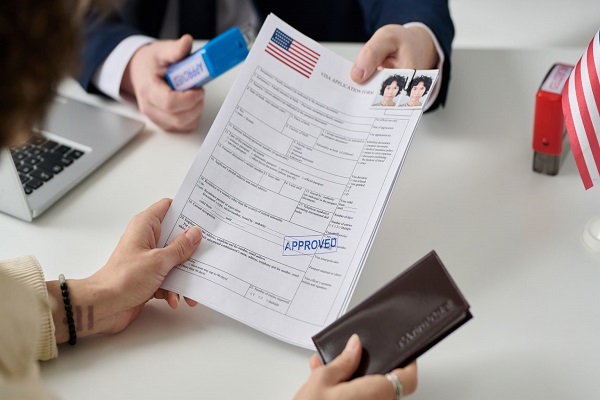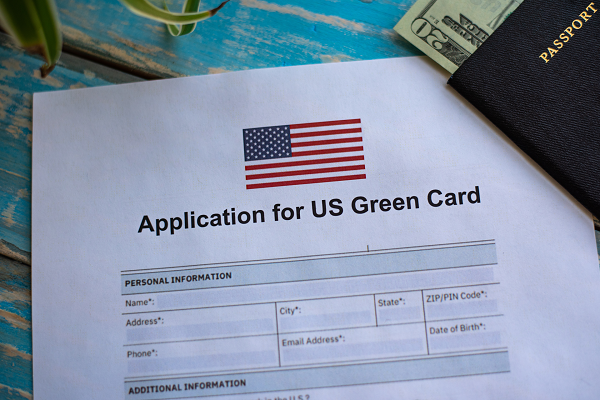In an increasingly globalized world, many individuals are seeking opportunities to secure second citizenships for reasons such as business expansion, personal security, improved quality of life, or better educational opportunities for their children.
Among the most sought-after passports globally is that of the United States. While traditional routes such as family sponsorship, employment, or asylum are commonly known, an often-overlooked but viable option is U.S. Citizenship by Investment. This guide offers a detailed roadmap to achieving U.S. citizenship via investment, outlining the requirements, procedures, benefits, and potential pitfalls.
Understanding U.S. Citizenship by Investment
The United States does not offer direct citizenship by investment, unlike countries such as Malta or St. Kitts and Nevis. However, the U.S. provides a pathway to permanent residency (Green Card) through investment, specifically under the EB-5 Immigrant Investor Program, which can eventually lead to U.S. citizenship. This indirect route is what is commonly referred to as U.S. Citizenship Through Investment.
What is the EB-5 Visa Program?
The EB-5 visa program, created in 1990 by the Immigration Act, is designed to stimulate the U.S. economy through job creation and capital investment by foreign investors. Under this program, foreign nationals can obtain lawful permanent residence (Green Card) by:
Investing $800,000 to $1,050,000 in a new commercial enterprise, depending on the project’s location.
Creating or preserving at least 10 full-time jobs for U.S. workers.
Once the investor meets these conditions and resides in the U.S. for a certain period, they may apply for naturalization, thereby achieving U.S. Citizenship Through Investment.
Step-by-Step Guide to Applying for U.S. Citizenship by Investment
Step 1: Determine Eligibility for EB-5 Visa
Before investing, ensure you meet the basic eligibility criteria:
- Minimum Investment: $800,000 in a Targeted Employment Area (TEA) or $1,050,000 in other areas.
- Lawful Source of Funds: You must demonstrate that your investment capital comes from legal sources.
- Business Type: Must be a for-profit, new commercial enterprise (established after Nov. 29, 1990).
- Job Creation: The investment must result in at least 10 full-time jobs for qualifying U.S. workers.
Step 2: Choose Between Direct Investment and Regional Centers
You can invest directly in your own enterprise or through an approved Regional Center, which pools funds from multiple investors into larger-scale projects.
- Direct Investment
- More control over business operations
- Must personally manage the business
- Must directly create the 10 required jobs
- Regional Center Investment
- Less direct involvement required
- Job creation includes indirect jobs (economically modeled)
- Lower risk, but also lower control
Choosing a Regional Center is the preferred option for most foreign investors pursuing U.S. Citizenship Through Investment due to its hands-off approach and more flexible job creation criteria.
Step 3: File Form I-526 or I-526E
The Form I-526 (Immigrant Petition by Standalone Investor) or I-526E (for Regional Center investors) is your initial application to prove that you meet the EB-5 eligibility requirements.
- Processing Time: 12–24 months (varies)
- Documentation Needed:
- Proof of investment amount
- Source of funds (bank statements, sale agreements, tax returns)
- Business plan
- Evidence of job creation plan
Once approved, you can move on to securing your conditional Green Card.
Step 4: Apply for Conditional Permanent Residency (Green Card)
After the I-526/I-526E approval:
- If in the U.S., file Form I-485 to adjust status
- If outside the U.S., apply through the U.S. consulate (Consular Processing)
Upon approval, you receive a 2-year conditional Green Card. During these two years, you must actively maintain your investment and fulfill the job creation requirements.
Step 5: Remove Conditions – Form I-829
Within 90 days before the expiration of your 2-year Green Card, file Form I-829, Petition by Investor to Remove Conditions.
Requirements:
- Prove continued investment
- Show that the jobs were created
- Demonstrate business sustainability
Upon approval, you become a lawful permanent resident, a crucial milestone on the path to U.S. Citizenship by Investment.
Step 6: Apply for Naturalization (Form N-400)
After maintaining lawful permanent resident (LPR) status for at least 5 years, you may apply for U.S. citizenship by filing Form N-400.
Eligibility Requirements:
- Physical presence in the U.S. for at least 30 months of the last 5 years
- Continuous residence and good moral character
- Ability to speak, read, and write in English
- Knowledge of U.S. history and government
- Oath of allegiance to the U.S.
Once approved, you are granted full U.S. Citizenship Through Investment.
Advantages of U.S. Citizenship by Investment
- Visa-Free Travel: U.S. passport holders can travel to over 180 countries without a visa.
- Business Opportunities: Access to one of the world’s largest economies.
- Education Benefits: Lower tuition for in-state students and access to top universities.
- Security: Enjoy protection under the U.S. Constitution and government.
- Family Inclusion: Spouse and unmarried children under 21 are eligible under the same EB-5 petition.
Risks and Considerations
While U.S. Citizenship by Investment offers many benefits, it’s essential to be aware of the risks involved:
1. Investment Risk
The EB-5 program requires “at risk” capital, meaning your investment must not be guaranteed to be returned. If the project fails, you could lose your money and your immigration benefits.
2. Fraud and Scams
Choose only USCIS-approved Regional Centers and perform due diligence. There have been several fraud cases, particularly involving non-verified projects.
3. Long Wait Times
Depending on your country of origin (e.g., China or India), you may face visa retrogression or long wait times due to country caps.
4. Policy Changes
Immigration laws are subject to change. EB-5 rules have evolved significantly since 1990, including changes in investment thresholds and processing times.
Alternative Routes: E-2 Visa (Temporary Investor Visa)
If you’re not ready to commit to the EB-5 program, the E-2 Treaty Investor Visa is a non-immigrant visa allowing citizens of certain countries to invest in and manage a U.S. business.
Pros:
- Lower investment (usually $100,000+)
- Faster processing (2–6 months)
- Renewable indefinitely
Cons:
- Not a direct path to a Green Card or citizenship
- Only available to treaty country nationals (e.g., not for Indian or Chinese citizens)
However, some investors pursue E-2 Visa as a stepping stone before switching to an EB-5 petition and ultimately seeking U.S. Citizenship Through Investment.
Recent Changes and Legislative Updates
The EB-5 Reform and Integrity Act of 2025 introduced several significant changes:
- Increased minimum investment amounts
- Mandatory audits and transparency for Regional Centers
- Reserved visas for rural, high-unemployment, and infrastructure projects
- Extended the EB-5 Regional Center Program through 2027
- These updates were aimed at enhancing program integrity and investor protections.
Source: USCIS EB-5 Reform and Integrity Act Overview
U.S. Citizenship by Investment for Families
One of the most attractive features of the EB-5 program is that the main investor’s family (spouse and children under 21) also qualify for Green Cards and eventual citizenship.
- Children can attend public schools and universities at resident rates
- Spouses can work and open businesses
- Family members can apply for U.S. citizenship independently after meeting residency criteria
This makes U.S. Citizenship by Investment not only a personal benefit but a generational one.
Legal and Financial Advisors: Why You Need Them
Pursuing U.S. Citizenship by Investment is a high-stakes, complex endeavor involving legal, financial, and immigration nuances. Hiring a qualified:
- Immigration attorney
- Financial advisor
- EB-5 project analyst
can make the difference between success and failure. Avoid shortcuts and only work with USCIS-certified Regional Centers and experienced professionals.
Final Note
U.S. Citizenship by Investment is not an overnight process, but for high-net-worth individuals, it offers a legitimate and rewarding path to living and thriving in the United States. While the EB-5 program involves considerable financial commitment and careful planning, the rewards—including a powerful passport, freedom of travel, economic stability, and future security for your family—can be substantial.
Aspiring investors must perform thorough due diligence, consult with professionals, and understand the entire journey from investment to naturalization. With the right strategy and patience, you can successfully navigate the path to U.S. Citizenship by Investment.
References
- U.S. Citizenship and Immigration Services (USCIS): EB-5 Immigrant Investor Program – https://www.uscis.gov/eb-5
- U.S. Department of State Visa Bulletin – https://travel.state.gov/content/travel/en/legal/visa-law0/visa-bulletin.html
- U.S. Immigration and Nationality Act (INA) – https://www.uscis.gov/laws-and-policy/legislation/immigration-and-nationality-act
- EB-5 Reform and Integrity Act 2022 Summary – https://www.congress.gov/bill/117th-congress/house-bill/2471/text
- Invest in the USA (IIUSA) – https://iiusa.org






